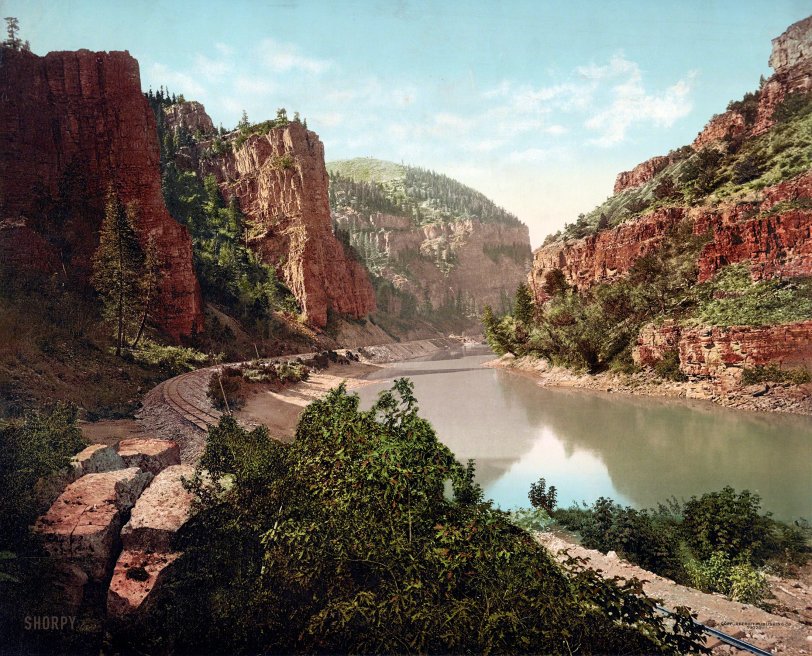


Framed or unframed, desk size to sofa size, printed by us in Arizona and Alabama since 2007. Explore now.
Shorpy is funded by you. Patreon contributors get an ad-free experience.
Learn more.

- Baldwin 62303
- Baldwin VO-1000
- Cold
- No expense spared
- Tough Guys
- Lost in Toyland
- And without gloves
- If I were a blindfolded time traveler
- Smoke Consumer Also Cooks
- Oh that stove!
- Possibly still there?
- What?!?
- $100 Reward
- Freeze Frame
- Texas Flyer wanted
- Just a Year Too Soon
- WWII -- Replacing men with women at the railroad crossing.
- Yes, Icing
- You kids drive me nuts!
- NOT An Easy Job
- I wonder
- Just add window boxes
- Icing Platform?
- Indiana Harbor Belt abides
- Freezing haze
- Corrections (for those who care)
- C&NW at Nelson
- Fallen Flags
- A dangerous job made worse
- Water Stop
Print Emporium
Echo Cliffs

"Echo Cliffs, Grand River Canyon, Colorado." Photochrom print published in 1914 from a glass negative taken many years earlier by William Henry Jackson, whose Western views, developed in his railcar-darkroom, formed the basis of Detroit Photographic's holdings in the company's early years. View full size.
Just two words
There are just two words for this Echo Cliffs colorized photo -- Incredible, Incredible.
Great photo!
I would love to see more photochromes on shorpy, autochromes too.
How it worked
A tablet of lithographic limestone called a "litho stone" was coated with a light-sensitive surface composed of a thin layer of purified bitumen dissolved in benzene. A worker then pressed a reversed halftone negative against the coating and exposed it to daylight for 10 to 30 minutes in summer, or up to several hours in winter. The image on the negative caused varying amounts of light to fall on different areas of the coating, causing the bitumen to harden in proportion to the amount of light. The worker then used a solvent such as turpentine to remove the unhardened bitumen, and retouched the tonal scale of the chosen color to strengthen or soften tones as required. This resulted in an image being imprinted on the stone in bitumen. Each tint was applied using a separate stone that bore the appropriate retouched image. The finished print was produced using at least six, but more commonly 10 to 15, tint stones, requiring the same number of ink colors.
So: the original photographic negative was used to "expose" specially prepared lithographic stones, which were then etched and engraved by hand to modify them as required for each different ink color. Then the stones were used in succession to print the 6, 10, or 15 ink colors that appear in the final product.
Glenwood Canyon
This is Glenwood Canyon, western Colorado (about 15 miles from my home). Grand River is now called the Colorado River. The railroad tracks are still there and heavily used by Union Pacific freight trains (mostly coal) as well as Amtrak passenger trains. Interstate 70 follows the canyon on the opposite side of the river. This is one of the most picturesque stretches of interstate highway anywhere in the U.S., and truly a marvel of engineering.
Intriguing
I know there were color photographs years before Kodachrome, but I never knew they were available at the turn of the century. Or was this print hand-colored? It looks fantastic!
[The original photograph was black-and-white; colors were added during the printing process. -tterrace]
























On Shorpy:
Today’s Top 5